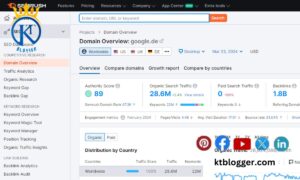Want to know how to see all the links on your website? There are a few ways to do it, some take longer than others. Learning these methods helps you find new linking opportunities and fix broken links quickly.
how to find internal links to a page? To find internal links to a page, use tools like website crawlers or check manually. Aim for a balanced number of internal links per page for optimal SEO. Implement internal linking strategies to improve navigation and boost SEO performance. Ensure internal links are SEO-friendly and contribute to a cohesive website structure.
Let’s check it out!
Content
How to Find Internal Links to a Page?
To find internal links to a page, use techniques like inspecting code or utilizing internal link analysis tools. Enhance site structure with page-to-page linking tactics, ensuring smooth navigation for users. Consider incorporating internal links strategically within blog posts or using CSS for styling. Internal link architecture plays a crucial role in optimizing website navigation and SEO.
Finding links within your website helps you find and fix any problems. You can use different tools for this.
Here are simple methods you can try.
1. Find Internal Links Manual
In my opinion, the most simple method to examine internal links on a page is by conducting a manual check. However, it’s the slowest approach and is only advisable if you have some posts to review.
Here’s how it works: Go through each page of your website or every post on your blog and quickly scan them. Whenever you encounter a link, hover over it to see its destination.
If your posts are all related, you’ll likely identify numerous internal linking opportunities during a manual check. Nevertheless, it does consume a considerable amount of time and involves a lot of clicking, making it the least efficient tactic.
A manual check is recommended when you receive conflicting information from various tools. For instance, you might find that a link is flagged as broken, only to discover there’s nothing wrong with it upon manual inspection.
2. Find Internal Links Using Google Search Console
Google Search Console can also assist in checking the internal links to a page.
Follow the steps I’ve mentioned below:
- Access your Search Console and navigate to the Links section in the left-hand menu.
- Once there, you’ll see a compilation of both external and internal links on your website.
- Click “More” in the internal links report to see all your pages and how many links each has.
- Then, click on a page to see what pages link to it.
But you won’t know exactly where the link is on the page or what text it uses. You can only look through the list and see if a page already links to the one you want.
3. Find Internal Links Using a Spider
To analyze a website’s internal linking structure, consider using an SEO spider tool. I suggest Screaming Frog, but there are other spider tools too.
In Screaming Frog, input the website you wish to analyze and initiate the crawl. The duration of the crawl varies depending on the website’s size, ranging from a few minutes for smaller sites to a couple of days for larger ones. You have the option to exclude specific sections of the site or focus solely on crawling the blog, depending on your objectives.
After the crawl completes, input the page you want to analyze for internal links into the search bar. Select the page from the list and navigate to the “inlinks” tab at the bottom of the Screaming Frog interface. Here, you’ll find a comprehensive list of pages linking to your selected page, along with the anchor text used.
You can export this list if necessary and apply filters to refine your analysis further. Screaming Frog boasts high accuracy, minimizing the occurrence of false positives compared to other SEO tools.
4. Find Internal Links Using SEO Tools
If you’re using a tool for SEO, like Ahrefs, Moz, or SEMRush, you can use it to find internal links on a webpage.
Let’s use Ahrefs for this task.
First, you need to add the page you want to check to the search box in Ahrefs’ Site Explorer. Then, click on the Internal backlinks report on the left-hand side. This report will show you a list of all the pages that link to the page you’re interested in.
You can use filters at the top of the report to find a specific page or anchor text. If you want to further analyze the data, you can export the list to a spreadsheet.
It’s essential to keep in mind that these tools might sometimes provide incorrect information. They might highlight issues or links that don’t exist. So, if you see something that doesn’t seem right, it’s a good idea to double-check manually.
By manually verifying the information, you can ensure its accuracy. This means taking the time to review the links and information provided by the tool to confirm that it’s correct.
So, using an SEO tool like Ahrefs can help you find internal links on a webpage. Just remember to verify the information manually to ensure its accuracy.
What are the Benefits of Doing Internal Link Audits?

There are many benefits when you do an internal link audit. Here are the top ones:
1. Enhancing Search Engine Visibility and Indexing
When you have internal links on your website, it’s like giving a map to search engines. This map helps them understand your website better and index it more accurately.
2. Boosting Website Authority and Rankings
Internal linking plays a crucial role in distributing link equity throughout your website. By strategically linking high-authority pages to other relevant pages, you can pass on valuable link juice and strengthen the overall authority of your website. This can result in higher rankings for target keywords and increased visibility in search engine results pages (SERPs).
3. Stop Losing Important Website Points
Sometimes, when a page on your website has too many links going out, it can lose some of its importance. This is called PageRank leakage. Doing internal link audits can help prevent this by making sure most of your links point to other pages on your website.
4. Find Mistakes and Make Your Website Better
Doing an internal link audit helps you find mistakes on your website. For example, you might find pages that aren’t linked to any other pages. Or you might find pages with too many links going out. Fixing these mistakes makes your website better for visitors.
5. Maximizing Conversion Opportunities
When you know where your website links lead, you can better guide your visitors to do what you want them to do. You can put messages or buttons in the right places to encourage visitors to take action.
FAQs
What is an Internal link Audit?
An internal link audit is checking all the links inside your website to make sure they work and lead to the right places.
Why is it important to do an Internal link Audit?
Doing an internal link audit is important because it helps your website show up better in search engines, fixes any problems with links, and makes sure your website is easy to use for visitors.
How often should I do an Internal link Audit?
You should check your internal links regularly, like every few months, to make sure everything is working well.
What tools can I use for an Internal link Audit?
You can use tools like Google Search Console or special software like Screaming Frog to help you find and fix problems with your links.
How can I make my Internal links better for SEO?
You can make your internal links better for search engines by using clear words to link to other pages on your site. It makes sure your site is organized well and fixes any broken links quickly.
Summing Up
Knowing how to find internal links to a page is important for your website. Use tools like Google Search Console and SEO spider tools. Check your internal links often to make sure they work and lead to the right content. Use clear anchor text and fix broken links quickly.
These steps will help your website perform better in search engines and provide a better user experience.





